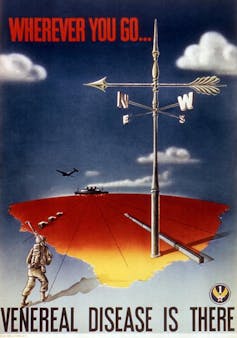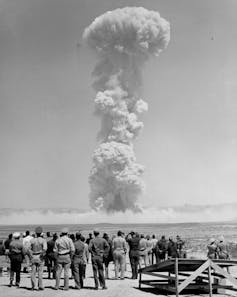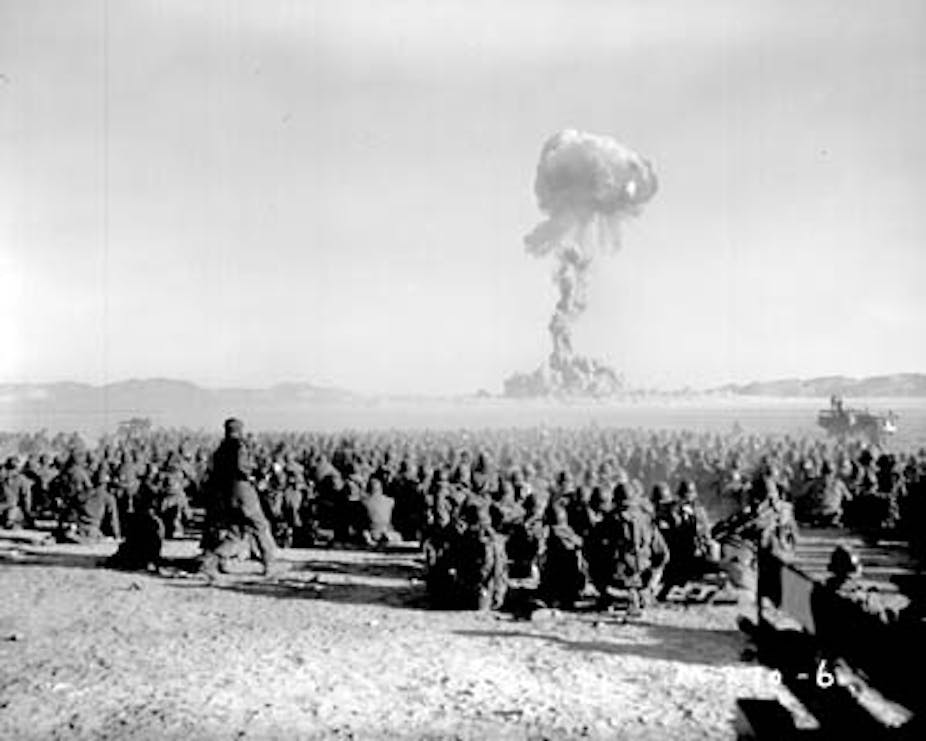Starting near the end of World War II and continuing until the 1970s, the US government sponsored radiation experiments on human subjects. Some of these experiments were conducted to understand the effects of radiation on atomic bomb workers. Others were to learn about the benefits of radiation for cancer patients. Many of the experiments were conducted in secret or not well understood by the public.
Twenty years ago, a committee appointed by President Bill Clinton reported on decades of radiation experiments conducted under the auspices of the federal government.
I was a senior staff member of that committee. Even though I had been teaching bioethics for 15 years, I was stunned to discover that my understanding of my field was drastically incomplete. I failed to appreciate that national security was the reason for many experiments in the history of medicine. After that experience, I published my book Undue Risk about human experiments and national security.
Unethical incidents often gave rise to ethical standards we now take for granted. But even when ethical standards were in place, there were times when they were grievously violated.
The Guatemala syphilis experiments
During World War II, sexually transmitted diseases (STDs) were a huge problem for the US military. Out of 1,000 sailors, as many as 300 could be sick at any given time. It’s likely many of them were infected when they visited prostitutes during shore leave in places such as Sydney, Australia, in spite of movies and posters that warned them about the risk.

Having so many sick sailors, soldiers and marines could cripple the war effort, so figuring out how to treat servicemen more effectively in the future became a matter of serious military interest.
In 1946, just after World War II, through the cooperation of American and Guatemalan officials, experiments on sexually transmitted diseases began in Guatemala. The goal was to see if the new wonder drug penicillin could cure these STDs.
The experiments involved hundreds of sex workers, prisoners, mental patients, soldiers and even children who were intentionally exposed to STDs. The Guatemala experiment was forgotten, at least in the US, until Wellesley College historian Susan Reverby discovered documents about the experiments in 2010 and reported her find to the US government.
That same year, president Barack Obama personally apologized to the president of Guatemala for the experiments. Obama also ordered his presidential bioethics commission to investigate the experiments and report to him about how such ethical violations could have happened. Once again, I was fortunate to be on the staff of this presidential commission.
Military research
Ironically, while the experiments in Guatemala were going on in the late 1940s, three American judges were hearing the arguments in a war crimes trial in Germany. Twenty-three Nazi doctors and bureaucrats were accused of horrific experiments on people in concentration camps.
The judges decided they needed to make the rules around human experiments clear, so as part of their decision they wrote what has come to be known as the Nuremberg Code. The code states that “the voluntary consent of the human subject is absolutely essential.”
The Guatemala experiments clearly violated that code. President Obama’s commission found that the US public health officials knew what they were doing was unethical, so they kept it quiet. Years later, one of those doctors had a key role in the infamous syphilis experiments in Tuskegee, Alabama that studied the progression of untreated syphilis. None of the 600 men enrolled in the experiments was told if he had syphilis or not. No one with the disease was offered penicillin, the treatment of choice for syphilis. The 40-year experiment finally ended in 1972.
Unlike the Guatemala experiments that were successfully covered up for so long, the syphilis experiments were done in public. What they had in common was exploitation of vulnerable people. Consent isn’t enough to make a research study ethical. It must be an informed consent. There is also the matter of justice. Both the burdens and benefits of science should not be confined to a single group of people.
Military research and an evolving understanding of ethics
Military research needs didn’t always lead to the exploitation of people. In some cases, important ethical standards were recognized.
When a yellow fever epidemic threatened American forces in Cuba in 1900, Army doctor Walter Reed wrote what seems to be the first consent form for a human experiment.
Before the Guatemala experiments, American prisoners were asked for their consent to be in another experiment on STDs and penicillin. Although the ethics of prison experiments are complex, many men in federal prisons at that time seem to have genuinely volunteered for malaria experiments at a time when their brothers and fathers might have been in combat.

And in 1953 the Pentagon adopted the Nuremberg Code for its defensive studies of atomic, biological and chemical warfare. They were the first and only US government agency to adopt the code word for word.
The problem is that ethics rules are inconsistently applied. There’s no better example than testing for radiation effects.
More than 200,000 soldiers and marines were exposed to atomic bomb blasts in the 1950s. Hardly any were asked for their consent because it was considered part of their training. Yet it seems a few of the men who were in psychological studies of their reaction to the bomb were asked for consent, perhaps because psychiatrists and psychologists were in charge so it was considered “medical.” Or the information given to the subjects before an experiment was vague, as in LSD experiments with soldiers in the 1950s.
National security and medical research today
Medical research related to national security continues to be an important enterprise. For example, there may be as many as 300,000 veterans of the wars in Afghanistan and Iraq with traumatic brain injuries. The federal government is investing a lot of money in neuroscience to improve treatment for these injuries. Inevitably this research will raise ethical issues, such as how well some of these patients can give a fully informed consent. I take up some of these problems in my book Mind Wars.
And human research continues to push forward into new frontiers. At the same time the Pentagon is interested in how to treat injured or sick warfighters, it’s also studying ways to enhance healthy human beings, especially their ability to learn new skills. For the 21st-century military, brains count as much as muscle. But how far should human enhancement go? And who goes first and at what personal cost? These are the questions that must be answered.
Because science is changing at a rapid rate, there must be a common understanding about how to apply the words on paper to new situations. A good place to start is by remembering how easy it is for things to go wrong.
We’ve learned that the finest ethics rules aren’t enough. There must be transparency and accountability so that the public can know what’s going on, and there are clear lines of responsibility if the rules are broken.
Click here to read more articles in The Conversation’s series On Human Experiments.

